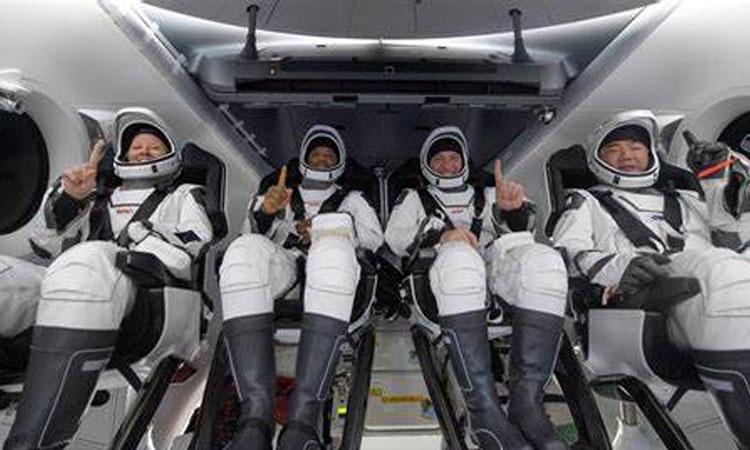NASA's SpaceX Crew-5 returned safely to Earth on Sunday after completing the fifth commercial crew rotation mission to the International Space Station (ISS) and spending 157 days in orbit.
NASA astronauts Nicole Mann and Josh Cassada, along with-JAXA (Japan Aerospace Exploration Agency) astronaut Koichi Wakata, and Roscosmos cosmonaut Anna Kikina,a-splashed down safely in their Dragon spacecraft off the coast of Tampa, Florida, at 9.02 pm EST (7.02 am India time).
"Welcome home, Crew-5! This international crew has been conducting critical science experiments and technology demonstrations on the International Space Station that will help prepare us for future deep space missions and pave the way fora-oura-return to the Moon," said NASA Administrator Bill Nelson.
Also read|Despite nationwide protest, French Senate passes pension reform bill
"Each advancement these explorers make is not an achievement for one, but a giant leap for all of humanity."
Mann, Cassada, Wakata, and Kikina travelled 66,577,531 miles during their mission, spent 156.5 days aboard the space station, and completed 2,512 orbits around Earth.
The Crew-5 mission was the first spaceflight for Mann, Cassada, and Kikina. Wakata has logged 505 days in space over his five flights.
Throughout their mission, the Crew-5 team contributed to a host of sciencea-and maintenance activities and technology demonstrations.
Also read|China's national legislature decides on new cabinet lineup
Cassada joined NASA astronaut Frank Rubio to conduct three spacewalks, preparing the station for and installing two new iROSAs, or International Space Station Roll-Out Solar Arrays.
Mann and Wakata teamed up for two spacewalks, also outfitting the orbiting laboratory for solar array augmentation, NASA said in a statement.
During their time on station, the crew members also tested hydroponic and aeroponic techniques to grow plants without using soil, released Uganda and Zimbabwe's first satellites and studied how liquids move in a container in simulated lunar gravity to generate data to improve Moon rover designs.
They tested an on-demand system to produce specific quantities of key nutrients from yogurt, kefir, and a yeast-based beverage.
"The astronauts grew dwarf tomatoes in efforts to address the need for a continuous fresh-food production capability in space and reinstalled the station's bioprinting facility as a stepping stone in long-term plans to manufacture whole human organs in space," said NASA.


















